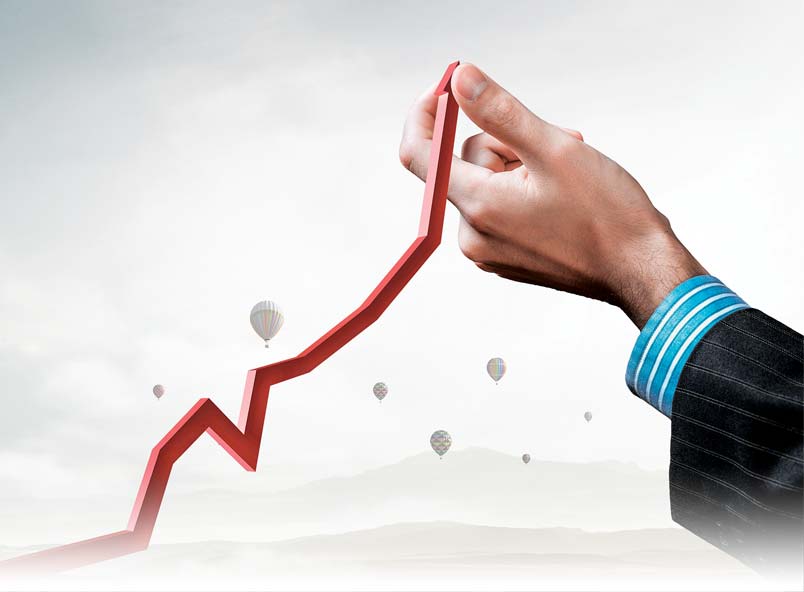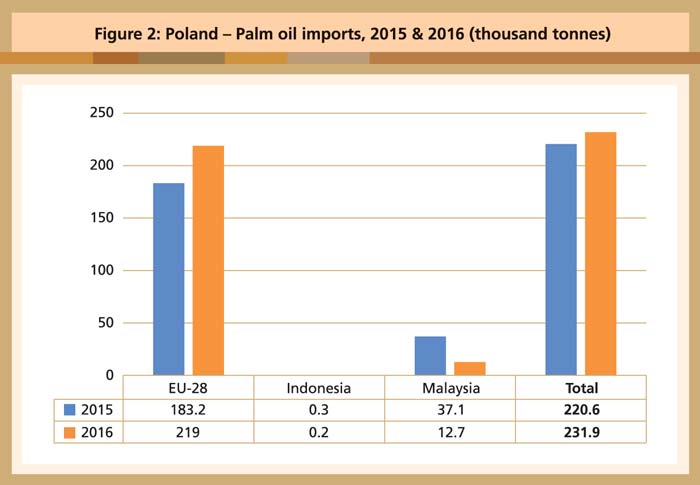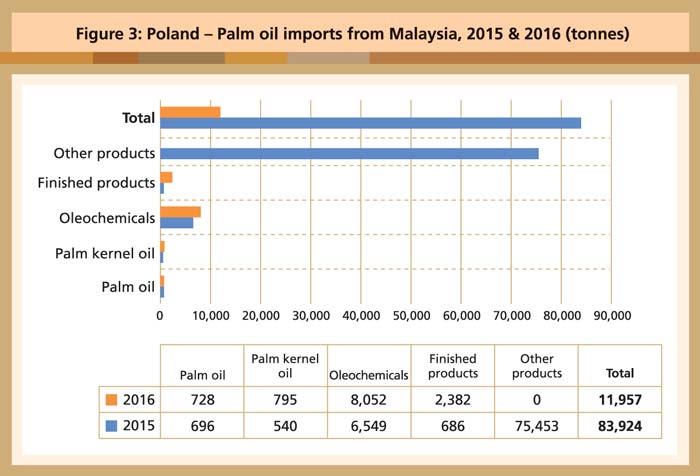



Poland has come a long way since 1989, when its first free elections were held since the Second World War. With a population of close to 40 million and the GDP at purchasing power parity of around US$800 billion (equivalent to US$21,000 per capita, according to 2012 estimates), the country is ranked sixth in Europe in terms of population and economic prowess.
Poland’s economy is considered to be one of the healthiest of the former Eastern Bloc countries. Its growth rates over the past few years have been among the highest in the EU.
There remains room for improvement, of course. Per capita income is still below the EU average. Other problems persist, including an inefficient commercial court system, rigid labour laws and heavy taxes.
A look at the oils and fats sector reveals that rapeseed oil is the frontrunner in terms of production and consumption in Poland. According to Oil World, the country consumed more than 870,000 tonnes of rapeseed oil in 2016 (Figure 1). Palm oil contributed almost 253,000 tonnes in 2016 – on par with lard, which has traditionally been second-highest in the domestic consumption rankings.

Source: World Bank
Palm oil is also the primary vegetable oil import into Poland, with Malaysia being the leading exporter. While the bulk of the palm oil imports appear in Oil World statistics as originating in the EU-28 (mainly Germany and the Netherlands), Malaysia is the only producer that also plays a role as direct exporter to Poland (Figure 2). However, recorded quantities in 2016 were only a third of the 2015 figures.

Source: Oil World Annual 2017
MPOB numbers show a decline in trade activity as well (Figure 3). However, the much lower 2016 total is due to the disappearance of the ‘other products’ category in 2016. The rest grew year-on-year.

Source: MPOB
Good position
Poland´s generally good infrastructure makes it a preferred place for international trade. In particular, the large and modern port of Gdansk on the Baltic Sea is in a position to play a vital role. Strategically located at the centre of Europe, this port lends itself to being the gateway for palm oil imports – not only to Eastern and Central Europe, but to the EU as well. Its neighbour to the west is Germany, the European economic powerhouse. The distance between the two capitals – Berlin and Warsaw – is a mere 550km.
Poland is a potentially lucrative market for Malaysian palm oil, although the commodity faces stiff competition from rapeseed oil and sunflower oil. Other hurdles to overcome are the poor awareness of the Polish consumer regarding the benefits of palm oil; as well as apprehensions connected to environmental issues. Malaysian companies stand to benefit by stressing the positive aspects of palm oil with regard to both nutrition and sustainability.
Poland’s success in its journey towards joining the ranks of modern, market-based economies over the past 25 years has been remarkable. Much has been achieved, and there are no current signs of the country slipping back into economic turmoil.
The incomes and appetites of citizens are growing. The country’s geopolitical positioning between the East and West is ideal. The image of Malaysia is positive, and the relationship between the two governments is good. Opportunities therefore abound for palm oil to reinforce itself as a serious rival to the conventional oils and fats consumed in Poland.
MPOC Brussels